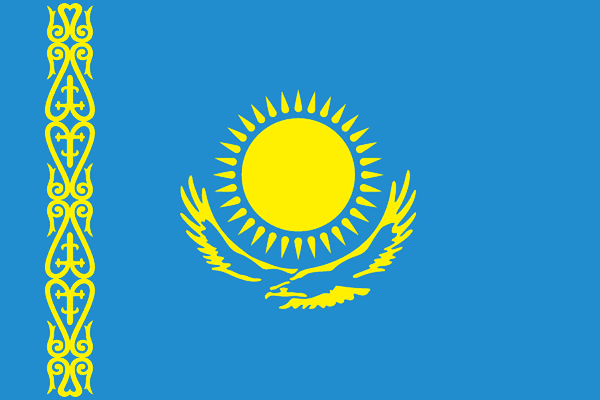
Russian Federation
Legal system
Russian legal system belongs to the so-called Roman-Germanic Law Family.
Judicial power is exercised by the courts. The Supreme Court of the Russian Federation is the highest judicial body for civil, criminal, administrative and other cases under the jurisdiction of general courts. In addition, the Supreme Court supervises courts of general jurisdiction and provides explanations on court practice issues.
Economy and financial sector
In 2022, the Russian economy ranked 8th in the world by GDP. The EU, APEC and CIS countries play a special role in the geographical structure of Russia's foreign trade.
The financial sector of the Russian Federation is represented by the following institutions: banks (over 80% of total assets), insurance and management companies, microfinance institutions, professional securities market participants, non-governmental pension funds, mutual funds, and investment portfolios under trust management.
The Association of Russian Banks (ARB) and the Association of Banks of Russia (Association "Russia") unite the banking community in the Russian Federation.
Financial Intelligence Unit
Rosfinmonitoring (Federal Financial Monitoring Service) is a Russian financial intelligence unit (FIU), which acts as the central agency coordinating the work of all government agencies related to AML/CFT/CPF. Rosfinmonitoring is an administrative type FIU. It was established in November 2001 and was initially under the jurisdiction of the Ministry of Finance, but since 2007 it has been a separate federal service. Since 2012, financial intelligence of Russia reports directly to the President of the Russian Federation. As a FIU, Rosfinmonitoring receives, processes and analyzes information related to ML/FT/CFP and, if necessary, transfers it to law enforcement agencies. In addition, Rosfinmonitoring is a registration and supervisory authority for a number of sectors, including leasing companies and real estate agents.
The Head of the Russian delegation to the EAG is Mr. Yury Chihanchin, Director of the Federal Financial Monitoring Service.
Agencies involved in the AML/CFT system
The institutional AML/CFT/CPF structure in Russia includes a number of federal ministries and other executive agencies.
Coordination of actions within the framework of the national strategy and policy is implemented by the Interagency Working Group chaired by the Head of the Presidential Administration of the Russian Federation (acting both at the country level and in each federal district where interagency coordination at the regional level is achieved).
Interagency interaction is also carried out within the framework of the National Antiterrorist Committee, the State Anti-Drug Committee, the Anti-Corruption Council under the President of the Russian Federation, and the Interagency Commission on Combating Terrorist Financing.
The Interagency Commission on AML/CFT chaired by the Director of Rosfinmonitoring is responsible for coordinating the effective functioning of the anti-money laundering system.
The activity of the Inter-Ministerial AML/CFT Commission is implemented with the support of the Consultative Council, which brings together representatives of the largest professional and private sector associations, as well as the Compliance Council, which consists of representatives of the largest financial institutions and DNFBPs.
The following agencies are involved in the AML/CFT/CPF system:
- General Prosecutor's Office of the Russian Federation;
- Federal Security Service of the Russian Federation;
- Investigative Committee of the Russian Federation;
- Ministry of Internal Affairs of the Russian Federation;
- Ministry of Finance of the Russian Federation;
- Ministry of Justice of the Russian Federation;
- Ministry of Foreign Affairs of the Russian Federation;
- Federal Customs Service;
- Federal Tax Service;
- Central Bank of the Russian Federation;
- Federal Service for Supervision of Communications, Information Technology and Mass Media;
- Federal Assay Chamber;
- Federal Treasury.
Legal framework
- Federal Law of August 07, 2001 No. 115-FZ (as in force on July 20, 2020) "On Combating Money Laundering and Terrorist Financing".
- Decree of the President of the Russian Federation of June 13, 2012 No. 808 (as in force on June 24, 2019) "Issues of the Federal Financial Monitoring Service".
- Decree of the President of the Russian Federation of May 21, 2012 No. 636 (as in force on September 14, 2018, as amended on January 21, 2020) "On the Structure of Federal Executive Agencies".
- The development concept of national AML/CFT system.
International cooperation
The Russian Federation is one of the founding member states of the United Nations (UN), the Commonwealth of Independent States (CIS), the Collective Security Treaty Organization (CSTO), the Eurasian Economic Union (EAEU), the Shanghai Cooperation Organization (SCO), the Eurasian Group on Combating Money Laundering and Financing of Terrorism (EAG), and the Council of Heads of Financial Intelligence Units of the Commonwealth of Independent States (Council of HoFIU CIS). Membership in OSCE, BRICS, G20, APEC and others.
Rosfinmonitoring represents the interests of the Russian Federation on the relevant forums of the Egmont Group - since 2002, FATF - since 2003, EAG – since 2004, Council of Heads of Financial Intelligence Units of the CIS Member States – since 2012 and has observer status in the MENAFATF since 2022.
Russia provides technical assistance to the Eurasian Group member states, including training specialists from financial intelligence units, supervisory and law enforcement agencies. For these purposes, the International Training and Methodological Center for Financial Monitoring was established, which performs the following functions in the anti-money laundering system of the Russian Federation:
- leading technical assistance donor in the Eurasian region;
- basic education organization;
- coordinator of the International AML/CFT Network Institute;
- expert and information center.

 Login to your account
Login to your account Eng
Eng Рус
Рус






